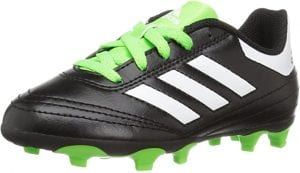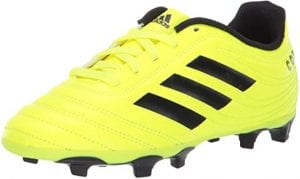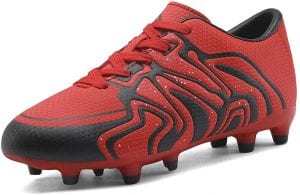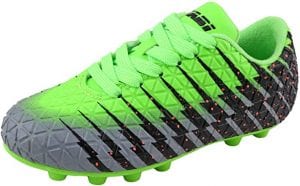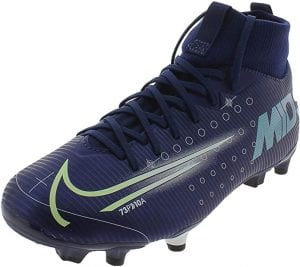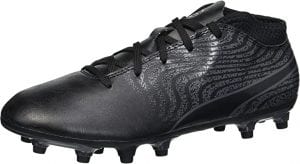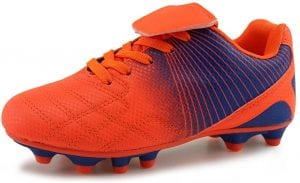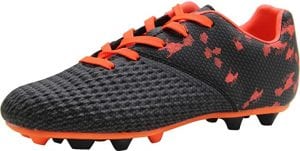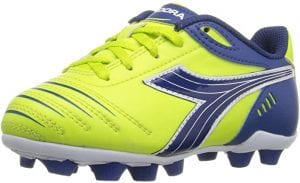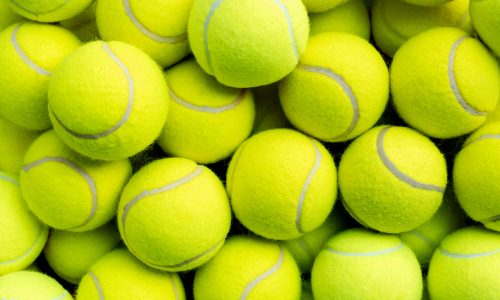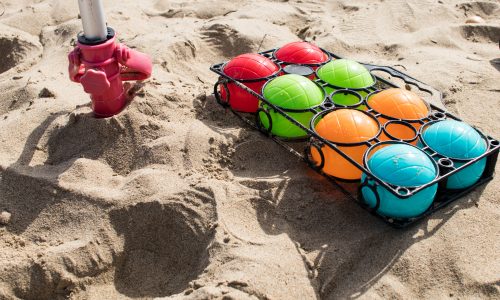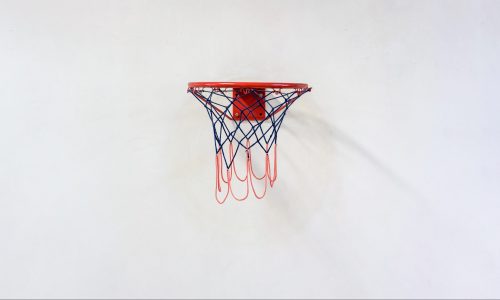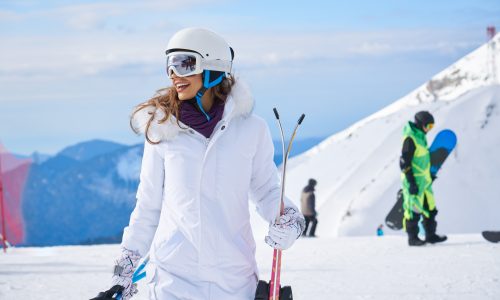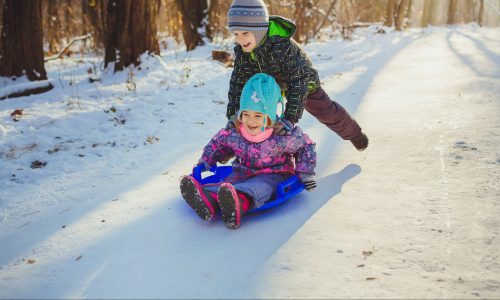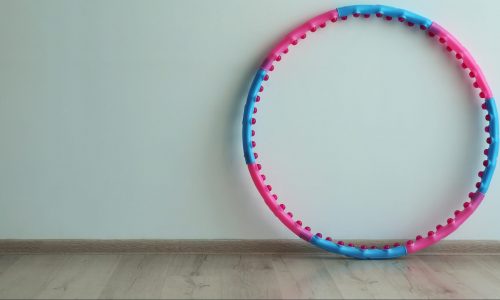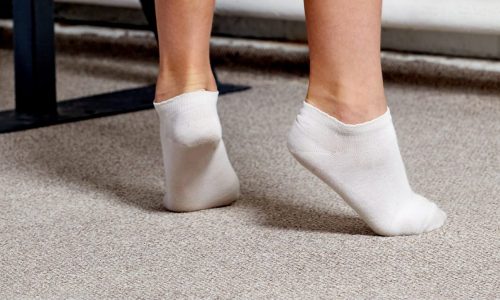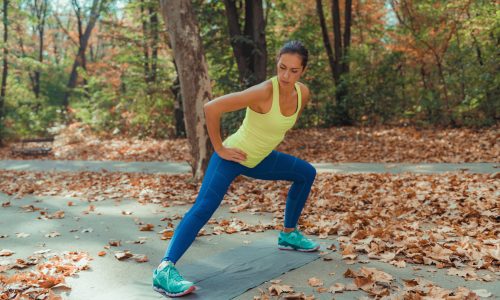The Best Boys’ Soccer Cleats
We looked at the top 9 Boys' Soccer Cleats and dug through the reviews from 15 of the most popular review sites including and more. The result is a ranking of the best Boys' Soccer Cleats.
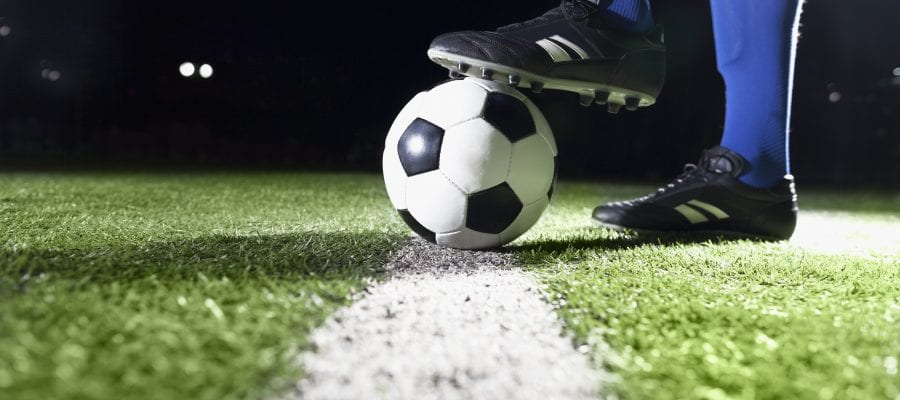
Our Review Process
Don't Waste Your Money is focused on helping you make the best purchasing decision. Our team of experts spends hundreds of hours analyzing, testing, and researching products so you don't have to. Learn more.
Our Picks For The Top Boys' Soccer Cleats
- 1. Adidas Kid’s Ace 16.4 FxG J Boy’s Soccer Cleats
- 2. Adidas Kids’ Copa 19.4 Firm Ground Soccer Shoe
- 3. DREAM PAIRS 160472-K Boy’s Soccer Cleats
- 4. Vizari Bolt FG Boy’s Soccer Cleats
- 5. Nike Jr. Mercurial Superfly 7 Academy MDS MG Boy’s Soccer Cleats
- 6. Puma Kids One 18.4 FG Jr. Boy’s Soccer Cleats
- 7. Hawkwell Athletic Outdoor/Indoor Comfortable Boy’s Soccer Cleats
- 8. BomKinta Kid’s FG Arch Support Athletic Outdoor Boy’s Soccer Cleats
- 9. Diadora Kids Cattura MD Jr Boy’s Soccer Cleats
Top to bottom, this is a quality pick for those who need a form-fitting shoe. The synthetic mesh upper holds tight to the foot while the lining keeps things cool. A special film protects the interior from water and dirt.
Secure-Fitting CleatThese cleats are built with an eye towards comfort and protection.
Synthetic leather construction ensures these shoes will stand up to the punishment of an entire season of games. Even with the sturdy materials, there's still plenty of flexibility where kids need it. A solid choice for those who play on firm ground.
Reliable and StylishThese synthetic leather shoes are both sturdy and eye-catching.
These shoes have striking looks, but the real innovation is on the underside. The conical studs are placed for the greatest possible stability and rotation traction helps the wearer turn on a dime. The cushioned insole provides a bit of added comfort.
Maximum TractionSecure, well-placed studs make this shoe an asset to any player's agility.
Looks are a premium in any of the color designs available with this cleat. The beauty is more than skin deep, too: There's a rubber outsole molded for shock absorption, and the lining is comfortable. Even the laces are spaced closer together for a secure fit.
Sporty and ComfortableThese shoes fit like a second skin and look great.
Buying Guide
With the exception of speed skating and the like, there are few sports where the footwear plays as big of a role as it does in soccer. That’s in terms of speed, performance and protection for the player. Think it’s stressful buying a regular pair of shoes for your child? Shopping for soccer cleats on your child’s first year making the team can be as nerve-wracking as that opening game — especially if you don’t know what to look for.
Setting a budget is, of course, the first thing you’ll want to do. Sports equipment can be expensive, and cleats are no exception. Shop around for deals, but these shoes are definitely not something to cut corners on, especially for young players. What’s on the bottom of the shoe matters just as much as what’s inside and what’s on top.
First, the bottom — also known as the soleplate. This is where you’ll find those distinctive studs that help players keep their traction on the pitch. Their size, shape and placement differ depending on what kind of ground they are intended for, so do a little homework by asking your child’s coach about their home field.
Cleats made for firm ground are designated “FG,” and they are best for dry, natural grass. The mid-sized studs on these shoes are typically rubber or some other synthetic plastic. “SG” (Soft Ground) cleats have longer studs that are sometimes tipped with metal, allowing them to dig into soft, muddy turf. “AG” cleats are built for thicker artificial grass, and they have a combination of traditional rounded studs and angular bladed ones. Less common are the “AT,” or Artificial Turf cleats. They sport numerous smaller studs, spaced closer together for use on the short turf of an indoor court. Finally, there’s “IN” or Indoor cleats, which eschew studs entirely in favor of a flat rubber sole. These are best for hard court surfaces and are fairly indistinguishable from regular sport sneakers.
Just looking at some of these shoes, you can tell your child is going to be making a lot of hairpin turns. Fit is important for any sports shoe, but here it can be crucial. This can be maddening when your child is going through a growth spurt, but it’s best to leave between a little less room in the toe than you would with a dress shoe. You know that rule about leaving a thumb’s width of space between the toe and the tip of the shoe? You may want to reduce that margin to a pinky finger, especially for younger players. Defensive players might benefit from the additional snug fit provided by mid-profile ankle coverage. In most cases, though, you’ll want to keep the ankles free to allow a greater range of movement.
Next, consider the uppers. That’s the portion of the shoe that covers the top part of the foot, and it’s just as important as the studs. After all, this is the surface that’s going to impact the ball. Good soccer cleats will have a natural, barefoot feel on the uppers, using a material that provides a little traction.
In most modern cleats, that material is going to be some form of synthetic fabric. Cleats like this in the low-to-mid price range will be lighter, but the material may not be as breathable or have as much “give.” You can still find cleats made of natural leather for a more delicate touch on the ball. For those less concerned with animal welfare, there are k-leather (or kangaroo leather) cleats that were once considered the high water mark for cleat material. This leather is durable, lightweight and flexible so it’s easy to see why. Many shoes might add a mesh or knit layer to the upper portion, which definitely offers a unique feel. If you can, it’s best to try out a few styles and see which one your child is comfortable with. Whatever the case, make sure there’s some waterproofing involved. At some point in the season, those shoes are sure to get soaked. With the right shoe and a little luck, maybe it will even be with Gatorade.
Why we recommend these boys' soccer cleats?
Products Considered
Products Analyzed
Expert Reviews Included
User Opinions Analyzed
Our experts reviewed the top 9 Boys' Soccer Cleats and also dug through the reviews from 15 of the most popular review sites including and more. The result is a ranking of the best of the best Boys' Soccer Cleats.
DWYM is your trusted roduct review source. Our team reviews thousands of product reviews from the trusted top experts and combines them into one easy-to-understand score. Learn more.
What to Look For
- Breaking in new shoes is a necessary hassle, but it’s absolutely critical for sportswear. Depending on the material of the shoe, that may take as long as a full practice session or just a couple laps around the track. If your shoes are natural leather, expect that process to be on the longer side and adjust your child’s expectations accordingly.
- Laces or no laces? There are distinct benefits and liabilities to each for soccer cleats. Laced shoes will generally have a tighter fit, but may not impact the ball as cleanly. Conversely, those with velcro straps will be looser but have a more consistent “touch.”
More to Explore
Though soccer originated as a sport of the working man, the first recorded owner of a pair of soccer cleats was decidedly not blue-collar. King Henry VIII ordered a pair of cleats custom made by shoemaker Cornelius Johnson around 1525, and they were likely much heavier than the ones players wear today. Less moneyed players in King Henry’s time would hammer metal studs into the bottom of their shoes for traction — an innovation that would definitely be improved upon with time.

